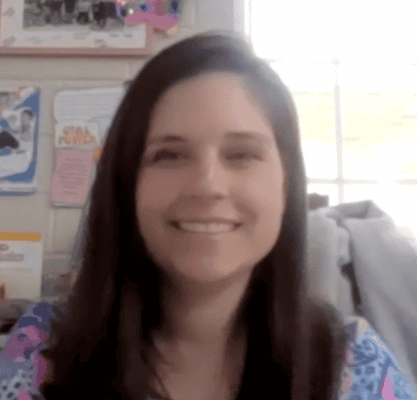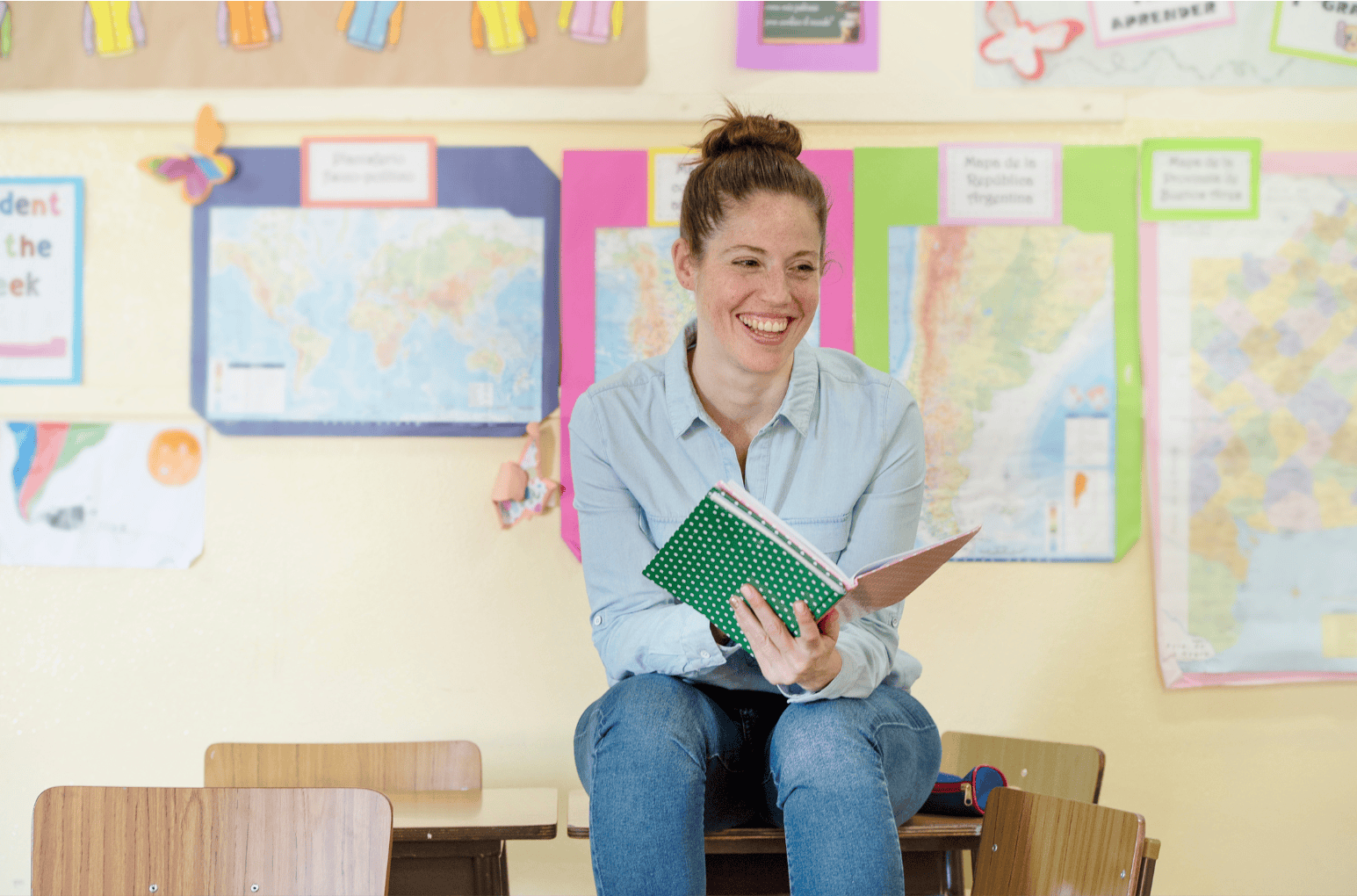REAL Teacher Feature: Callie Hammond
Thank you to Callie Hammond for sharing her REAL life with us! Callie is an English teacher at Duchesne Academy of the Sacred Heart in Houston, Texas. Here are her thoughts on discussion, R.E.A.L.®, and learning.
Hometown: Concord, NC
Current City, School, Teaching Assignments:
Houston, Texas at Duchesne Academy of the Sacred Heart. Currently a seventh and eighth grade English teacher.

Describe yourself as a student in three words:
As a student I would describe myself as interested in details; the kind of student who did all the reading, but perhaps wasn’t a perfectionist; and also excited.
When it comes to class discussion, what is your “why”?
I’ve had a lot of really awesome teachers and probably a lot of favorite teachers, but the one who stands out the most was my high school History and then later AP government teacher. He stands out because he was very energetic. He loved his topic and his subject. He was one of the first teachers who, even though we were talking about opinion-related things, never told us his opinion. I’ve always thought that’s something I strive to do as well when I’m teaching; I don’t ever want my students to know my opinion.
When it comes to class discussion, what is your “why?” What feels compelling and important about teaching these skills?
For me, and thinking about class discussion in my classroom, my “why” started with asking how do I get a group of middle school girls to have a conversation where they’re not just agreeing with each other? How do I get them to actually think about the topic, utilize their readings, and come up with their own opinions that they can back up with all this work that they’ve done? A lot of times in an all-girls classroom, they’ll feel like “we’re all in this together, and we’re all going to be friendly.” I don’t want them to be mean, obviously, but I want them to disagree with each other and have reasons for their disagreement.
Take us back to the first R.E.A.L.® Discussion you led – what were you worried about going into it? What surprised you about it?
I remember my first R.E.A.L.® discussion was two years ago. It was with eighth grade girls in English class, and we were talking about The Outsiders, which was their summer reading. I think we started by comparing The Outsiders to this herd of elephants, which is a pretty common comparison English teachers do. I think one of the things I was most worried about is building discussion skills, because my girls are very good at having an answer and taking turns and saying their answer, but when they do that, they’re not really talking with each other.
While it’s still a work in progress, one thing that has worked well is giving them questions, so if they find themselves staring at each other, they have to ask follow-up questions. Sometimes, it’s just as simple as posing a devil’s advocate question: “oh, well, if you all agreed, pretend one of you now disagrees. What would you say?” And that really helps.
How do you orient your students to R.E.A.L.®?
When I introduce R.E.A.L.® at the beginning of the year, we go through the steps and then talk about the point of discussion. During that conversation, my students will make a list — usually about why we have discussions, or when we have discussions. For the most part, they’re already bought in at this point, because they like talking. I think part of what makes R.E.A.L.® very valuable is that the girls know they have to prepare. I think that helps their mindset, because it makes a R.E.A.L.® discussion tangibly different.
How do you go about planning for a R.E.A.L.® discussion? What have you figured out about the types of texts or DQs that work well for your students?
I’ve been on a journey with writing DQs. My girls really respond to writing questions that focus on the literature while also including their opinion. One of my very first questions was so bad — it was something like “how does the historical setting and the cultural setting or context impact To Kill a Mockingbird?” And no one disagreed. and they were talking, but it was really boring.
This year, we compared Lord of the Flies to The Outsiders. One of our DQ questions was “Who’s a better leader, Ralph or Jack?” That really gets them going. They start really getting excited about it, and they almost forget that it’s an academic discussion. So, for me, it’s been important to layer in student opinion with the work they’re doing.
When it comes to discussion, what are your top 3 learning goals for your students?
I’m hoping my students, especially my eighth grade girls, go to high school with the foundational skills needed to approach any academic discussion. I hope they know they need to think about the question, they need to go back to their research, they need to have their own answer and facts to back it up. To me, that’s the most important thing.
Second, I hope they just feel empowered — that they believe their opinion matters and they are not too shy to talk and speak up.
And finally, I hope they gain the ability to disagree without it becoming personal, which is something that we talk about a lot.
Can you think of a moment you’ve experienced this year or last where a student had a breakthrough during a discussion? What did it look like? How did that feel as a teacher? Did you see it have an impact on the other students?
Overall the biggest breakthroughs that we have had are from the girls who feel shy or quiet and don’t typically speak up. They’ll talk with their small group, but then if we start talking as a larger group, even informally, they’re typically the ones who are quiet. R.E.A.L.® has helped those girls come in and feel prepared, because I think that’s the issue for a lot of girls. They get anxious that they’re not prepared and don’t want to say anything. That’s what usually keeps the quiet or shy girls quiet.
I have seen that breakthrough happen many times, and it’s been awesome to see that moment when the rest of the class looks over and realizes the quieter girl is sharing her thoughts. They’re always kind about it. And I hope the shy girls then see that they don’t have to be scared.
What discussion challenges have you encountered? How do you approach those?
Every new group of students has their own challenges with discussion. This year actually has gone a lot better than last year, which could be because I’m better at teaching it to them. The biggest challenge I still face (even though it helps those girls who are shy) is getting through to my students that it’s okay to talk in a large group, that they have done the work, and that they’re prepared. My approach usually is to put them purposely with their friends, and move from smaller groups where they start to feel more comfortable to a larger group. That can help to get their ideas out. Then, if their friend is more outspoken, they’ll say something like “Sarah has a great idea.” I think that helps, too. It’s almost like a reminder to promote your friend who had a great idea.
What inspires you?
I’m really inspired by other teachers who want their classrooms to be very engaging, and I’m very inspired by reading about other teachers. I will fall down the rabbit hole of looking up what other teachers do for Act IV of Romeo and Juliet. I’ll waste two hours, which is terrible, but there are so many cool ideas out there.






